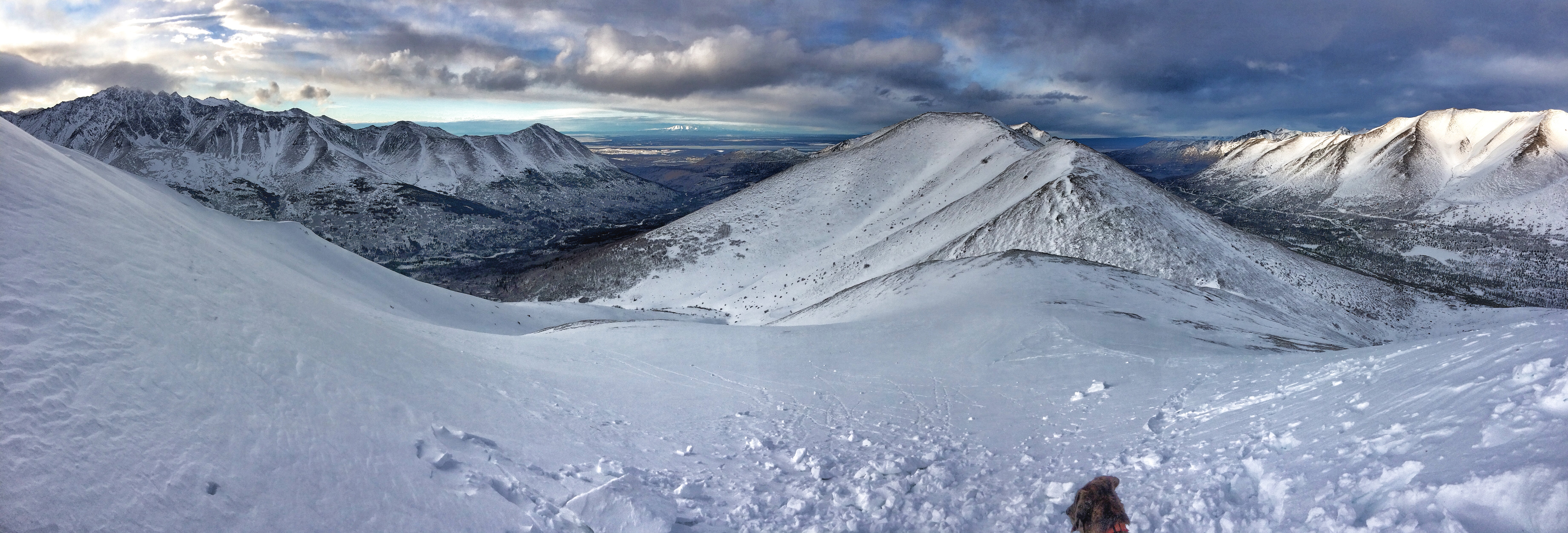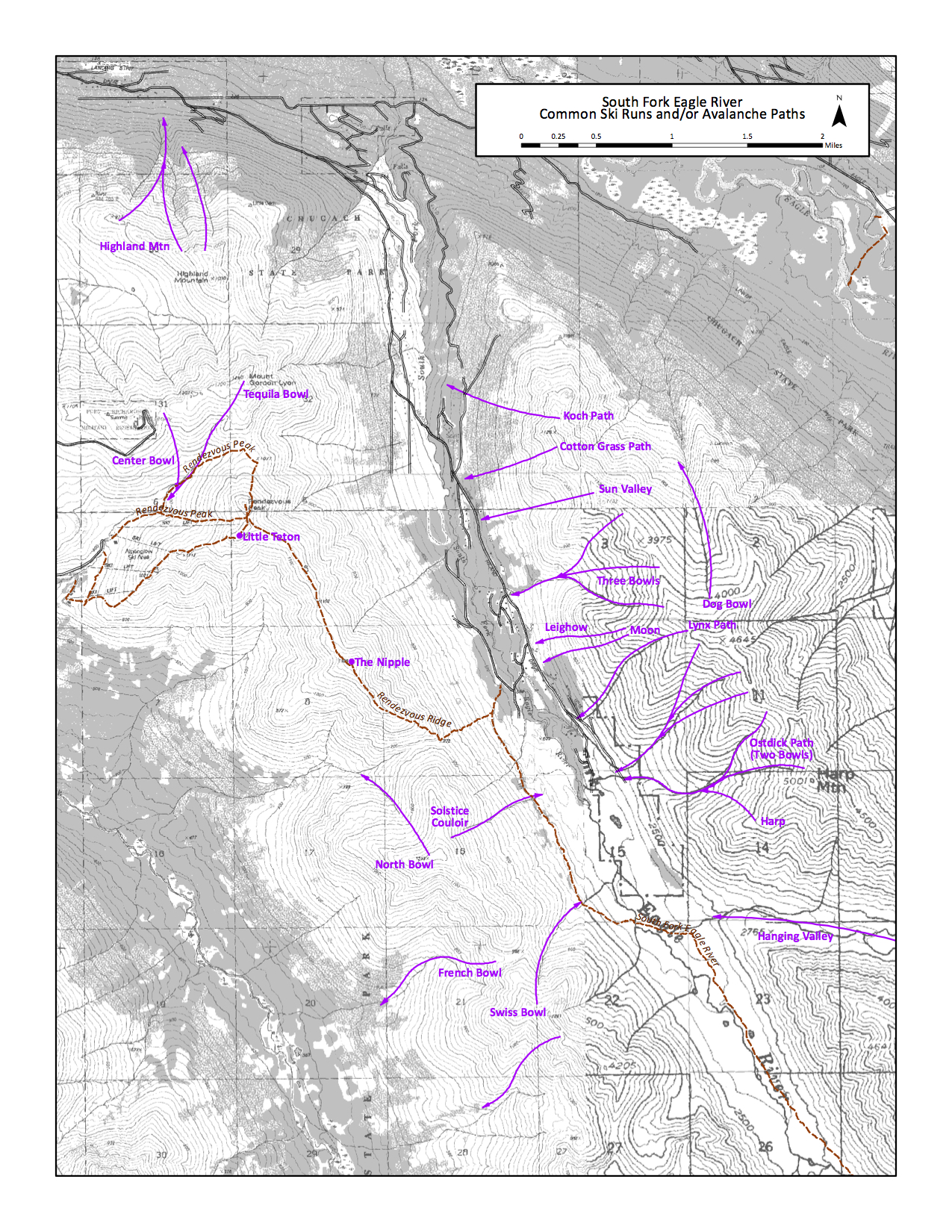Observations
Eagle River – South Fork – French & Swiss Bowls
Red flags (obvious signs of instability):
- Visible snow transport and wind loading from moderate SE winds
Weather:
- Mostly cloudy
- Light to moderate SE wind
- Temps in the mid 20s
Surface conditions:
- Pleasant, wind-buffed, fresh, medium density snow in sheltered lee areas (2000′ runs in consistent, carve-able powder did exist)
- 1F-P hard wind slab developing in upper elevation lee areas along ridges and near peaks
- Windward areas scoured to old, very hard wind slab or bare rock, tundra, etc.
Snowpack:
Found indication in the South Fork area that old persistent slabs (deep within the snowpack) still lurk and new persistent slabs (closer to the surface) have formed.
Pluming along ridges gave visible evidence of snow transport and wind loading today, and wind slabs of varying thickness had already developed above 3000′ in lee areas near ridge lines: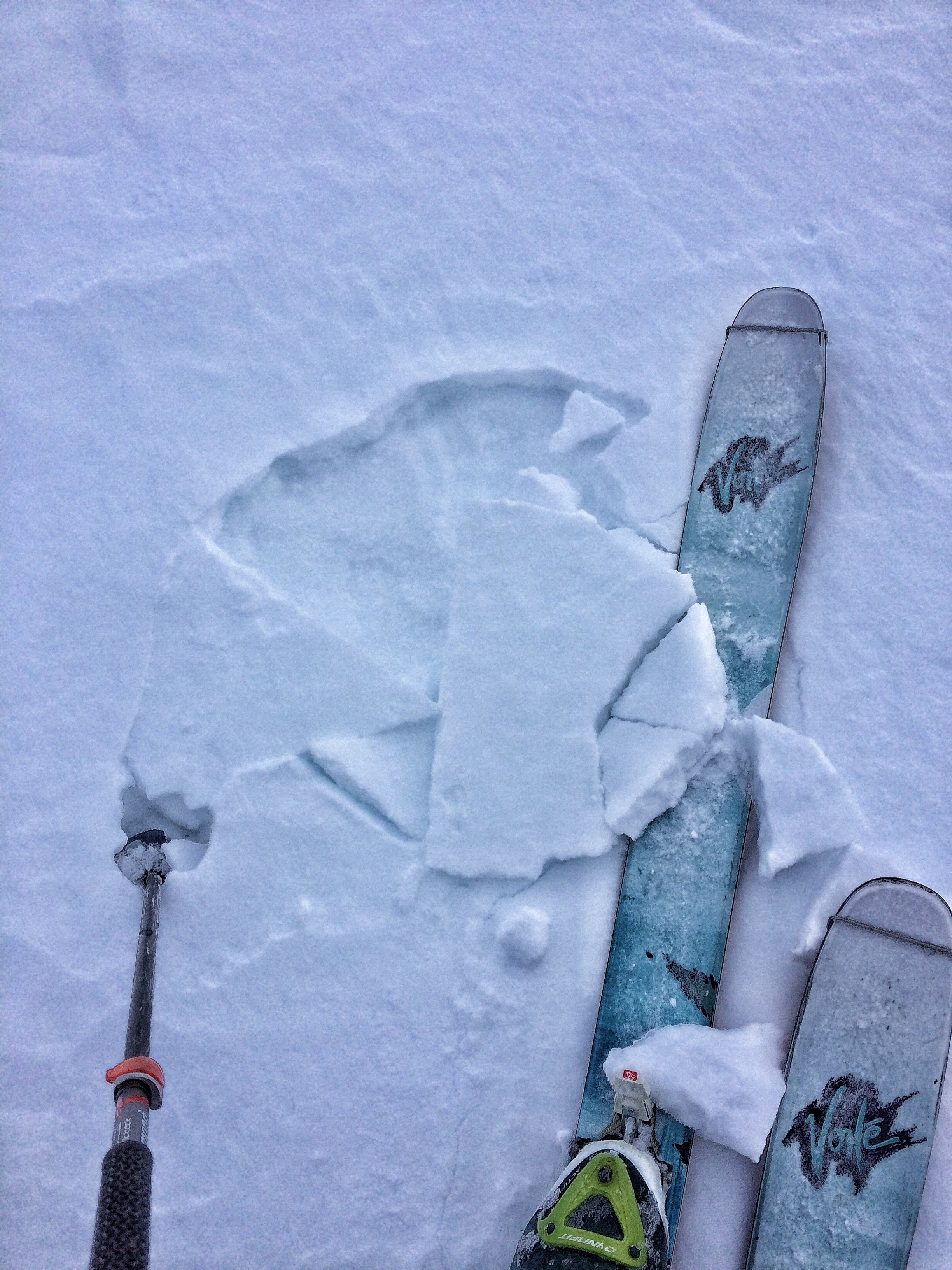
Snowpit on the lee (westerly) side of the ridge approach between Swiss and French bowls:
- ~3700
- 34 degree slope
- 289 degree west aspect
- 197cm height of snow
- Buried surface hoar layer ~10-15cm down from surface at 186cm where snow height measured. Test results: STE, CT7, 11 Q2 ~10cm 1F+ wind slab on ~5cm faceted layer with uniform layer of surface hoar on top (the most distinct line visible in pit wall photo 10-15cm from surface).
- Buried surface hoar layer ~30cm down from surface at 167cm where snow height measured. Test results: STE, CT18, 23 Q2 (pictured in shovel shear test photo).
- Faceted interface between two old, P hard wind slabs ~77cm down from surface at 120cm where snow height measured. Test results: ECTPV (pictured in snowpit ECT photo with dog). This layer did not show reactivity within the standard results of the CT’s, but did exhibit the concerning result in the ECT. This may be due to considerable stress being applied when isolating the extended column due to hard snow deeper within the snowpack, but is still significant due to demonstration of propagation propensity.
- Below 105cm (bottom of snowpit) the snowpack consisted of VERY HARD wind slab and was extremely difficult to chisel through…
Snowpit location looking toward Temptation and the Ship Creek valley: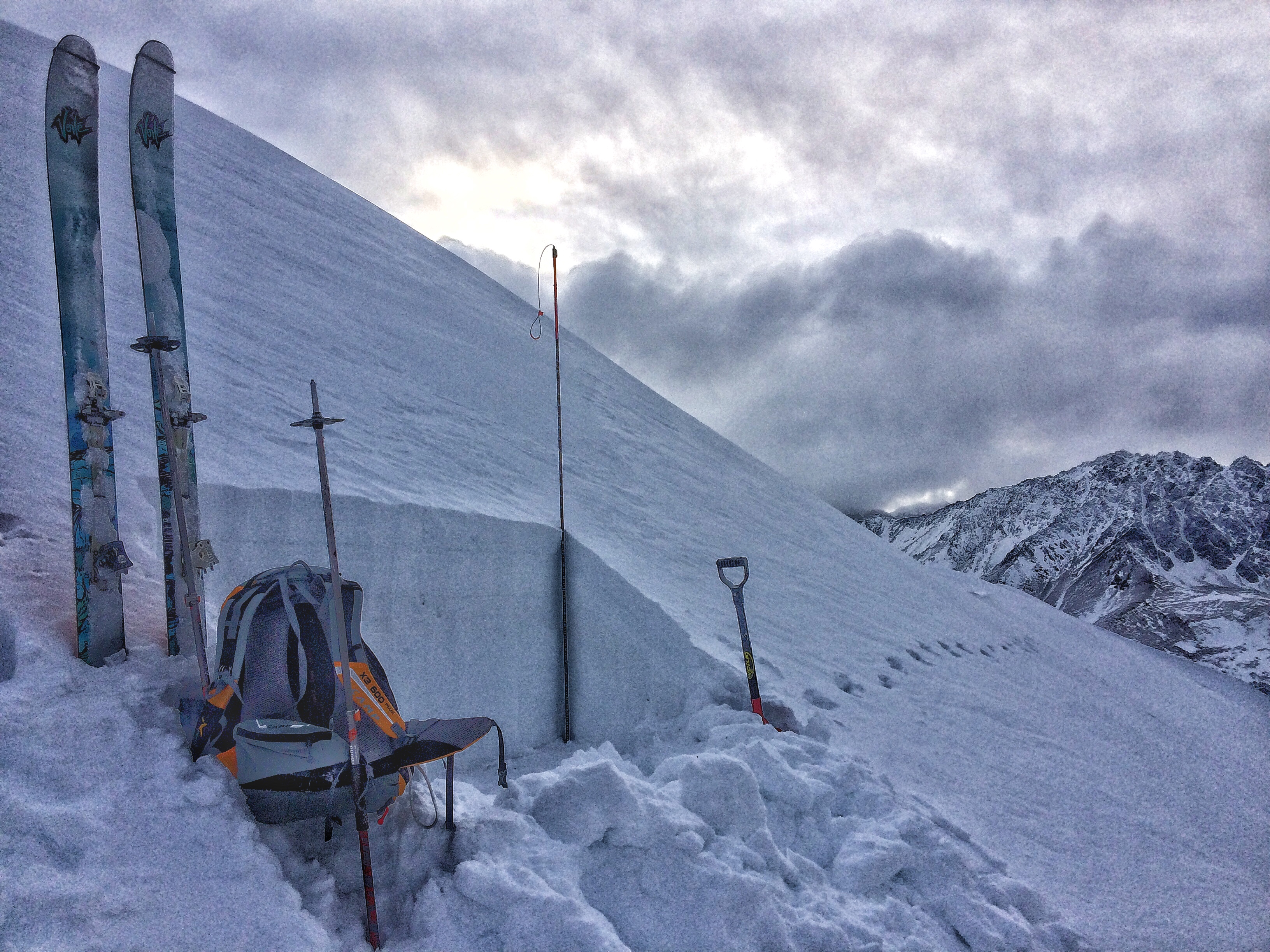
Snowpit location looking toward Harp and Hanging Valley: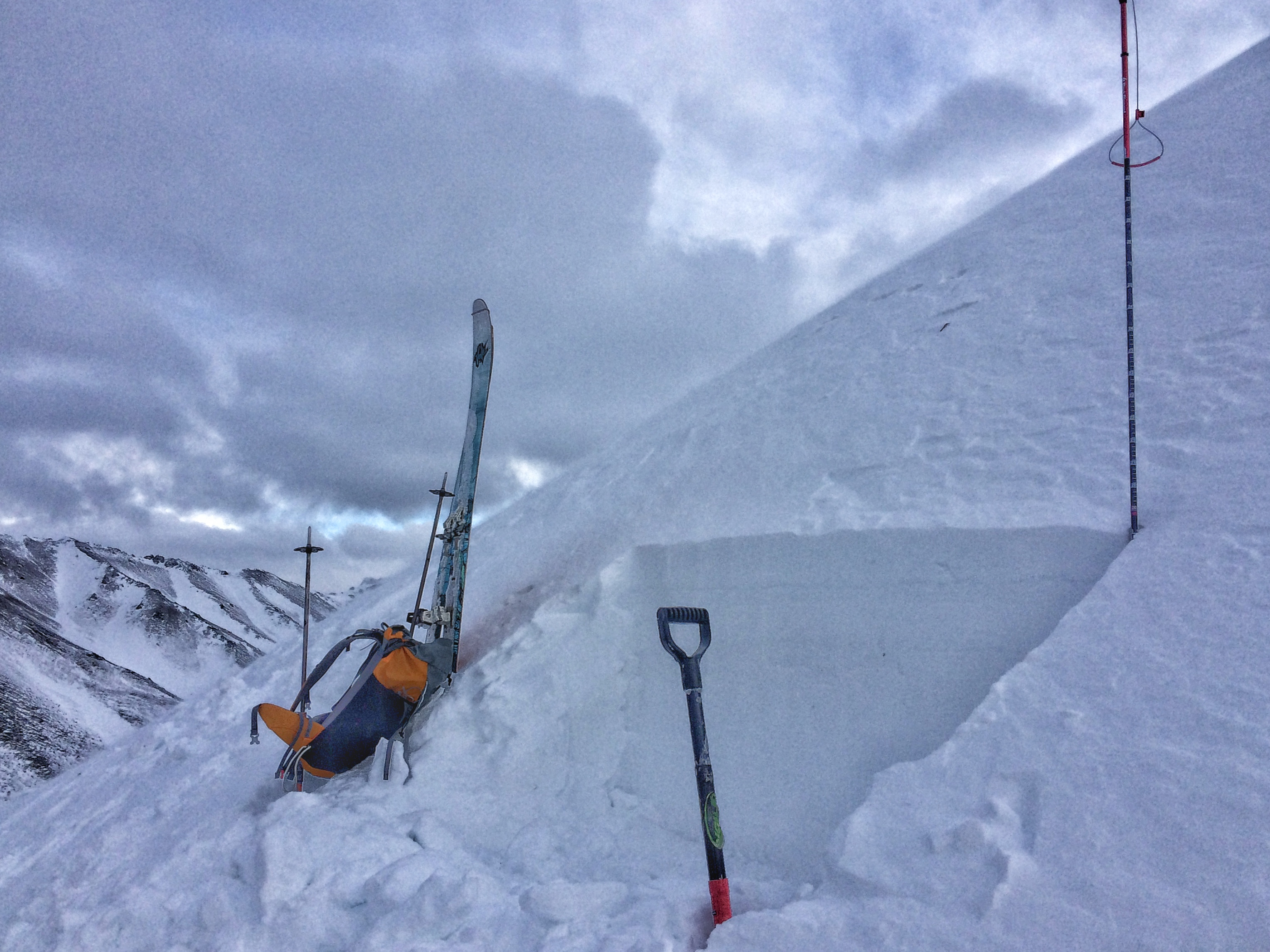
Snowpit with two layers of buried surface hoar visible as distinct lines (the one closer to the surface more prominent):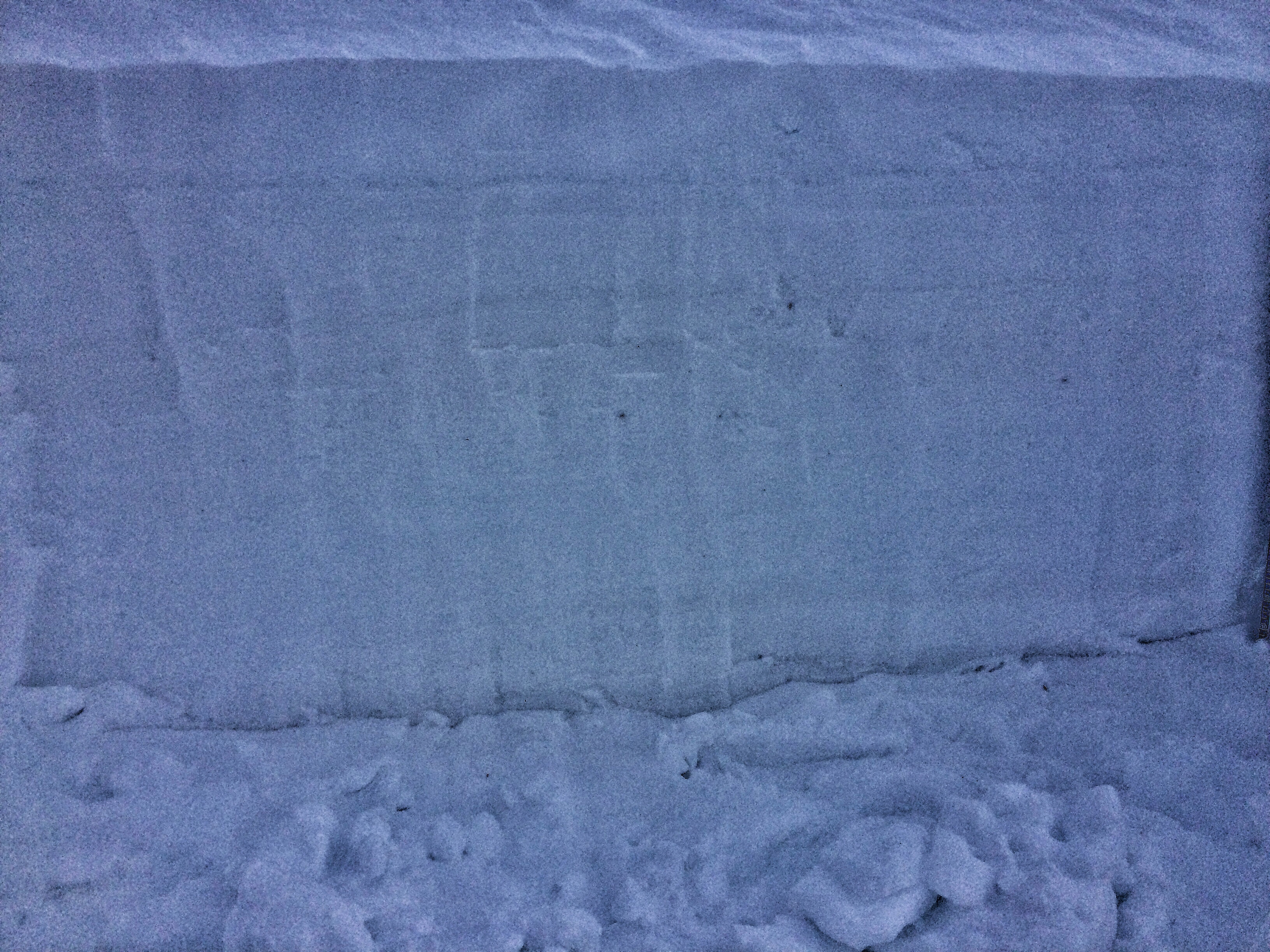
Shovel shear test showing depth of lower layer of buried surface hoar: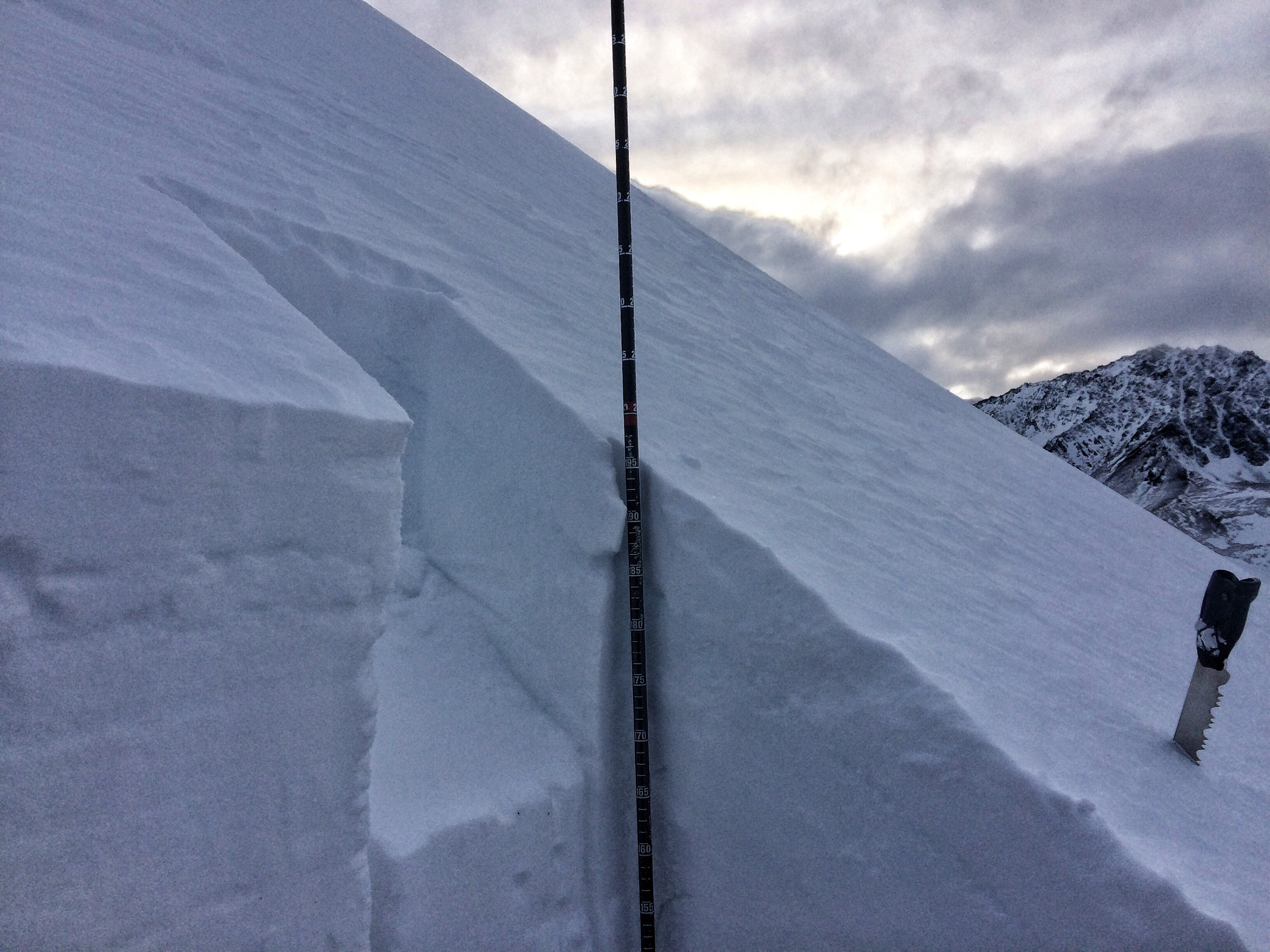
Extended column test showing persistent slab failure ~2.5′ from surface on faceted interface between two old, pencil hard wind slabs: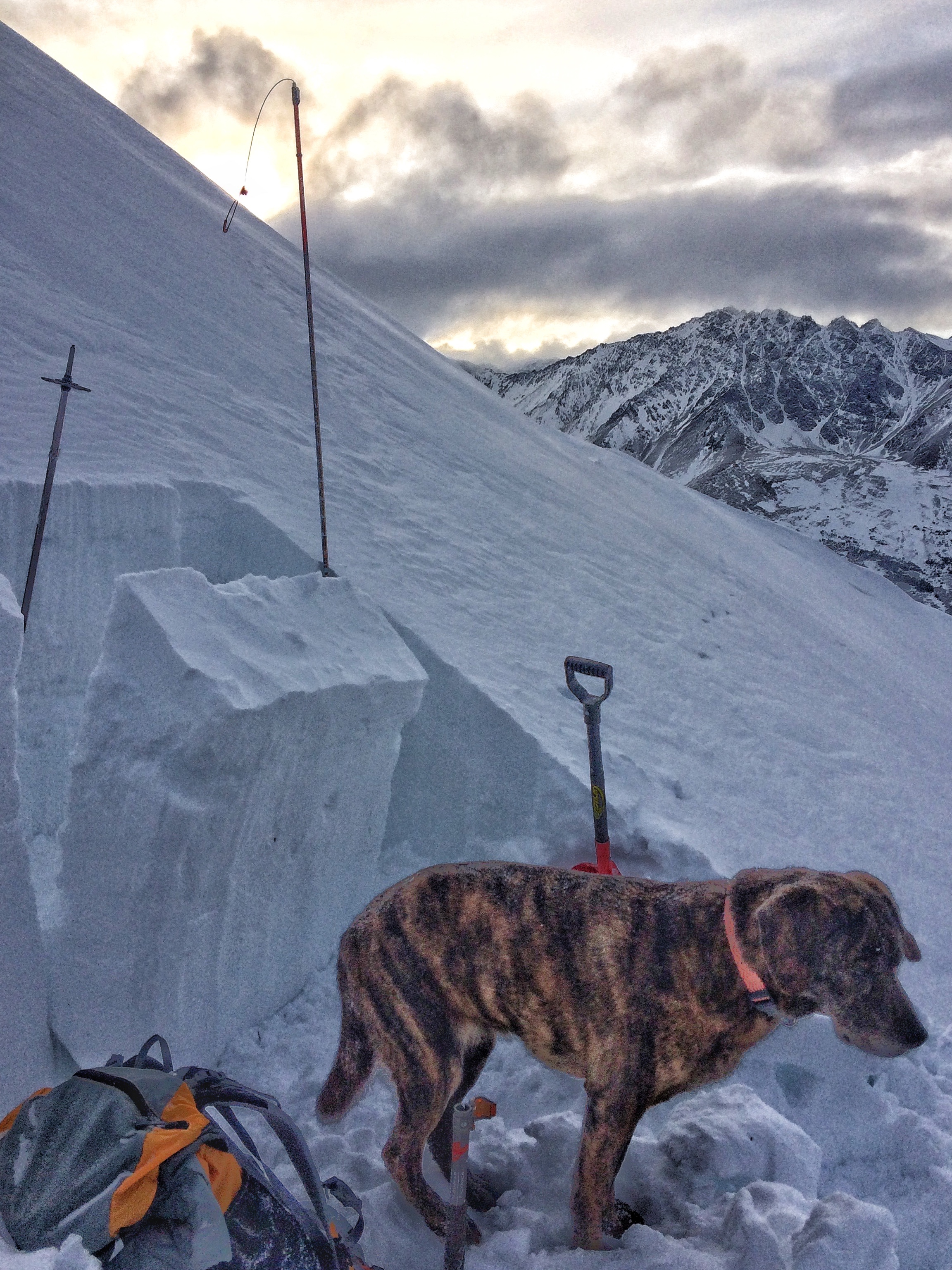
View down French bowl and the Ship Creek valley from snowpit location: